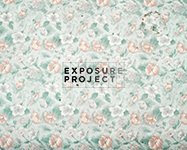In the spirit of artistic collaboration,
The Exposure Project is pleased to announce the unveiling of a new, somewhat experimental photographic endeavor.
Graphic Intersections, loosely inspired by the old Surrealist and Dadaist game
Exquisite Corpse, is a project that will attempt to unite disparate artists in an interconnected, photographic relay of images inspired by one another. For those unfamiliar with
Exquisite Corpse, it is succinctly described here:
"Among Surrealist techniques exploiting the mystique of accident was a kind of collective collage of words or images called the cadavre exquis (exquisite corpse). Based on an old parlor game, it was played by several people, each of whom would write a phrase on a sheet of paper, fold the paper to conceal part of it, and pass it on to the next player for his contribution."Essentially, this is how
Graphic Intersections will work. We will collect submissions from interested photographers until September 30, at which point we will select the participating artists and designate one of these photographers to start the whole thing off. The first photographer will be given a prompting word or concept to work from and will subsequently make photographs inspired by this idea. They will send us their favorite and most representative image from this session which we will then send along to the next artist. The succeeding artist, based solely on their visual, emotional, intellectual, or philosophical response, will in turn make photographs in artistic reaction to the one they were given. The artists involved will not be given any written material to accompany the photograph, nor will they know whose image they're responding to. This is designed to propagate randomness and avoid preconceived biases. This process will continue until the chain has been completed.
There are a few stipulations with the
Graphic Intersections project. Firstly, participating photographers will be required to shoot, develop/import and submit their chosen image in no more than 2 weeks. I realize that this does not leave a tremendous amount of time to carry out this process. However, in the interest of completing this venture in under a year it seems necessary to instate a specific time frame. Secondly, chosen photographers will have to exercise a certain amount of patience and trust in the process, as there will be 15-20 artists each with a two week time slot. Lastly, images submitted for this project must be taken specifically for
Graphic Intersections. Each photographer must submit a new image which does exist in a previously constructed body of work.
As visual artists, our creative decisions are largely affected by a myriad of personal, social, political and aesthetic issues, all of which impact the photographs we make. With a such a diverse array of artistic identities included in one project, we hope that
Graphic Intersections will facilitate greater communication and solidarity, not only between the photographers involved, but between the images produced.
So, if anyone wants to partake in this unpredictable photographic relay race, send an e-mail to
ben@theexposureproject.com with
Graphic Intersections in the subject header. You do not need to send any images, bios or statements, just your website link (if you have one) and confirmation that you want to participate.























































